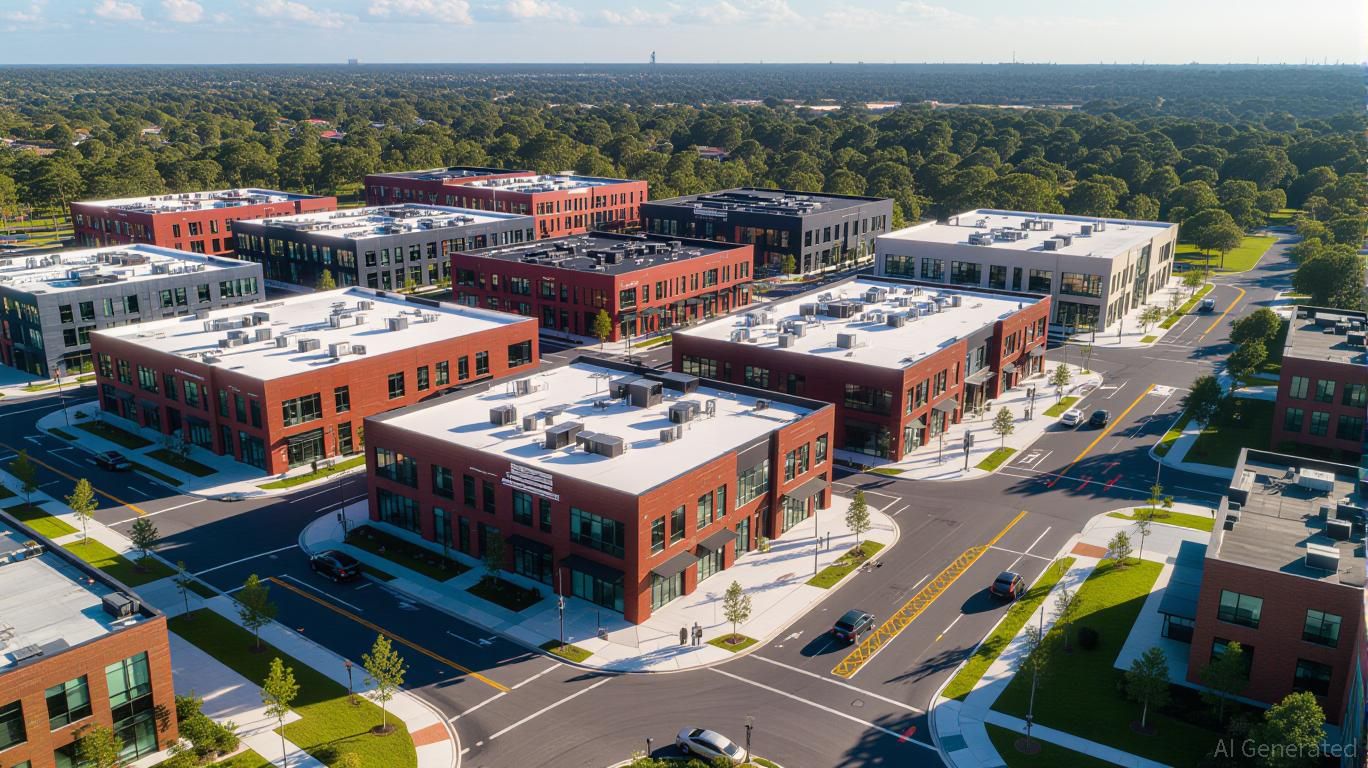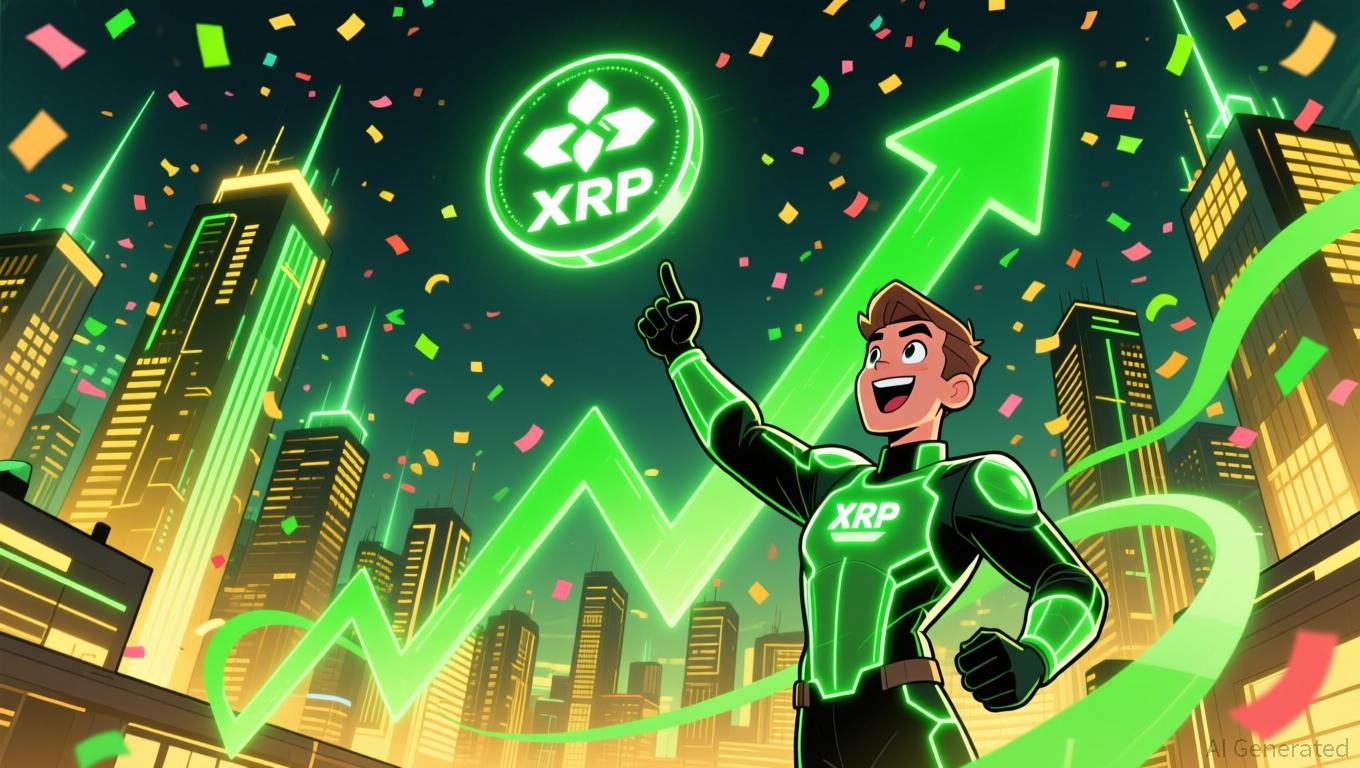Unlocking Potential in Industrial Properties: The Revitalization of Xerox Webster Campus
- Xerox Webster Campus in NY transforms 300-acre brownfield into industrial hub via $9.8M infrastructure upgrades and public-private partnerships. - State-funded projects including road improvements and sewer expansions unlock 1M sq ft of modern industrial space for manufacturing and tech sectors. - Governor Hochul's "sustainable ecosystem" strategy aligns with infrastructure-driven development, attracting semiconductor and renewable energy industries. - Shovel-ready model reduces construction risks, offer
A Framework for Infrastructure-Driven Expansion
Central to the Xerox Webster Campus redevelopment is a $9.8 million FAST NY grant, which has

Scaling Up Through Public-Private Partnerships
The Xerox Webster Campus illustrates how public-private partnerships (PPPs) can help manage risks in large-scale industrial developments. By blending government and private funding, the project overcomes many of the financial and regulatory challenges typical of brownfield projects. For example, the $500,000 federal grant for the Community Access Project shows how
This approach is especially relevant in the current industrial property market. According to a 2025 Clarion Partners report,
Investment Opportunities in Ready-to-Build Markets
The Xerox Webster Campus is part of a broader trend. From 2023 to 2025, industrial real estate investment has increasingly focused on returns tied to infrastructure. While short-term obstacles like softer rents and economic uncertainty remain,
Developers are shifting toward smaller, multi-tenant buildings that provide more stable cash flow and reduce the risks of single-tenant properties
Meanwhile, private equity groups are expanding into infrastructure and private credit to achieve distinct returns
Wider Lessons for Industrial Real Estate
The Xerox Webster Campus redevelopment also demonstrates the value of municipal adjustments in unlocking potential. By updating land use classifications and simplifying permitting, local authorities can speed up industrial growth in areas that have been underutilized. This is especially significant in regions like the Sunbelt and Midwest, where
For REITs and private equity, the message is clear: infrastructure-led development is now a mainstream approach. Clarion Partners points out that
Conclusion
The Xerox Webster Campus redevelopment is more than just a local achievement—it reflects the broader transformation of the industrial real estate sector. By integrating infrastructure upgrades, public-private partnerships, and innovative design, the project shows how industrial properties can be repositioned to address the needs of a post-pandemic economy. For developers, REITs, and private equity, the main lesson is clear: in a time of supply chain shifts and the rise of e-commerce logistics, the best opportunities are found where infrastructure investment and strategic planning intersect.
Disclaimer: The content of this article solely reflects the author's opinion and does not represent the platform in any capacity. This article is not intended to serve as a reference for making investment decisions.
You may also like
Bitcoin News Update: Hive Invests $300M in ATM to Boost AI Efforts While Stock Drops Amid Doubts
- Hive Digital Technologies launched a $300M ATM equity program to fund its "dual-engine" strategy of Bitcoin mining and AI infrastructure expansion. - The program enables flexible capital raising through 11 underwriters, supporting a renewable-powered data center in Canada and recent 285% revenue growth. - Despite strong financial performance, shares fell to $3.10, reflecting market skepticism about execution risks and competitive pressures in AI infrastructure. - Analysts highlight Hive's 90% renewable e

Bitcoin News Today: Bitcoin Faces $90k Challenge as ETF Investments Meet $3.5B in November Withdrawals
- Bitcoin hovers near $86,600, 30% below its October peak, amid consolidation and mixed institutional flows. - Spot ETFs saw $238M inflow but faced $3.5B November redemptions, highlighting fragile market confidence. - Technical analysis identifies $90,000 as a critical resistance level and $85,000 as key support for further direction. - Critics like Peter Schiff argue Bitcoin lacks utility, exacerbating bearish sentiment amid macroeconomic uncertainty. - Market awaits ETF flows, rate decisions, and institu
XRP News Today: XRP's RSI Hits 80 Once More: Approaching End of Bull Run or Bearish Reversal Ahead?
- XRP's monthly RSI hit 80 for the second time, signaling potential late-bull phase rather than imminent crash, per Egrag Crypto's analysis. - Grayscale's upcoming XRP ETF and $7.19B 24-hour inflow boosted market cap to $122.49B, with ETFs projected to absorb 500M XRP daily. - Exchange balances dropped 430M tokens in eight days, creating liquidity squeeze as price rebounds from $1.96 support toward $2.60 target. - Analysts note RSI above 50 threshold suggests prolonged distribution phase, with 60% probabil

3 Altcoins Investors Should Buy and Why Prices Are Rising
